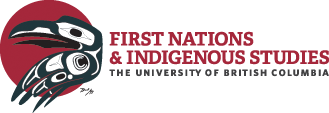UN Declaration on the Rights of Indigenous Peoples
…What is the UNDRIP? From the Ninth Session of the Permanent Forum on Indigenous Issues. New Zealand delegation celebrates the endorsement by the Government of New Zealand of the…
Global Actions
…century, policymakers have been obliged to balance individual rights with collective rights through new international instruments. A history of global Indigenous organizations Chief Deskaheh Chief Levi General (1873–1925), now better…
Aboriginal Fisheries in British Columbia
…the fish and the people: The WSÁNEC people successfully governed their traditional fisheries for thousands of years, prior to contact. This was not just because there were laws and rules…
Oral Traditions
…(2001): 10. 8 Wendy C. Wickwire, “To See Ourselves as the Other’s Other: Nlaka’pamux Contact Narratives.” Canadian Historical Review 75, no. 1 (1994):19. 9 Keith Thor Carlson, ed., A Stó:lō–Coast…
Marginalization of Aboriginal women
…restructured over time through a number of policies, including the Indian Act, Indian status, and the residential school system. Scholars, community members and other experts point out that even after…
Aboriginal Rights
…practiced and enjoyed since before European contact. Because each First Nation has historically functioned as a distinct society, there is no one official overarching Indigenous definition of what these rights…
The White Paper 1969
…Indian Act. This white paper was met with forceful opposition from Aboriginal leaders across the country and sparked a new era of Indigenous political organizing in Canada. What is a…
UBC Dialogue: Nov 1, 2011
…available. If you view the video and find that during or after you are experiencing significant difficulties, we urge you to contact one of the support services listed below. On…
Powley Case
…of that European contact, it would be impossible to locate a Métis right prior to contact as is required in the Van der Peet test. Therefore, the courts decided that…
Indian Status
…their band, and their registration number. “Status Indians” are wards of the Canadian federal government, a paternalistic legal relationship that illustrates the historical imperial notion that Aboriginal peoples are “children”…

